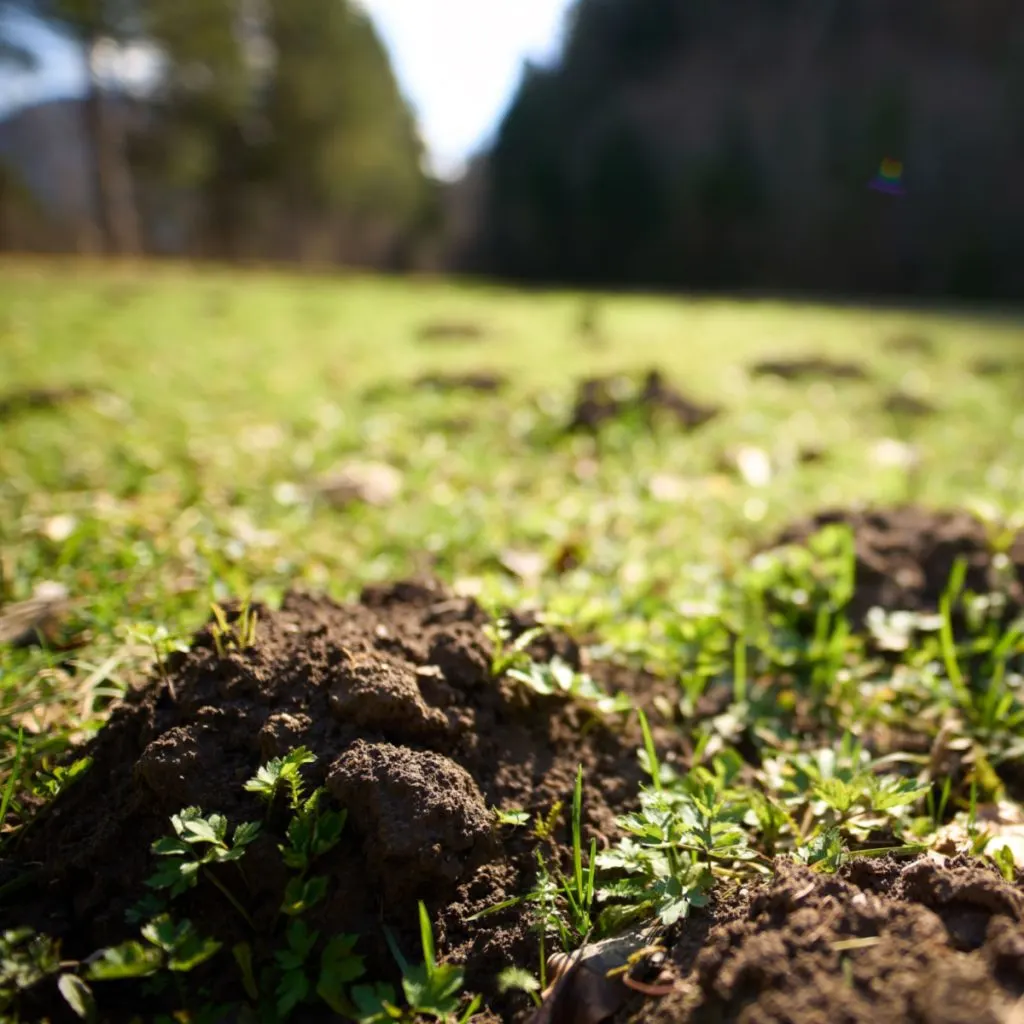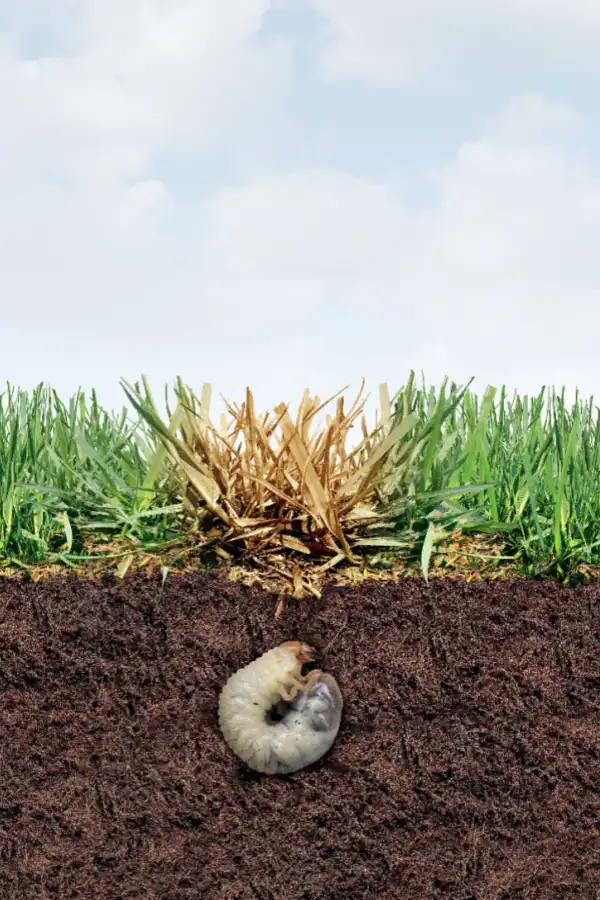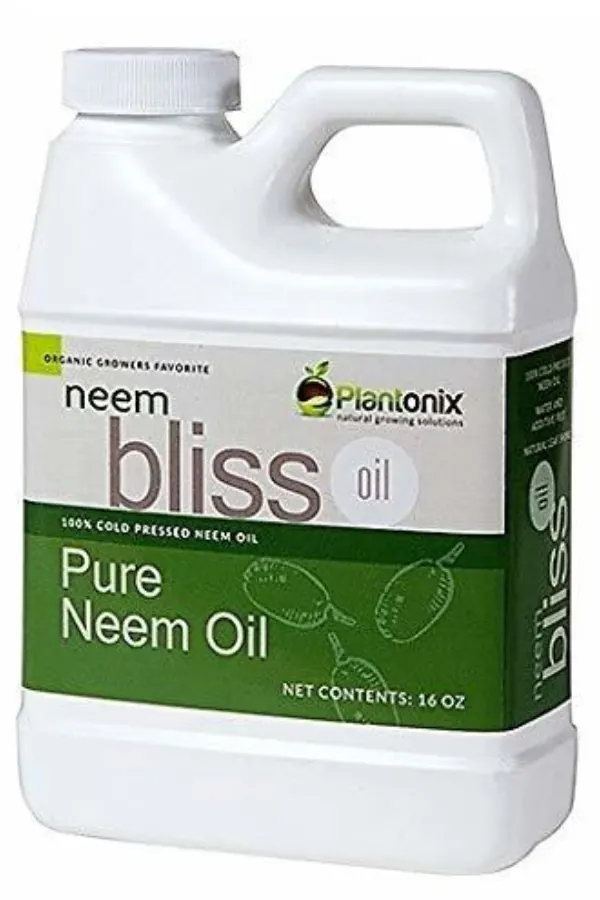Looking for the secret to finally stop ground moles and grubs from ruining your lawn all at once – and without having to resort to dangerous chemicals to do it?
If your yard has become a battleground of tunnels, soft patches, and torn-up turf, chances are you’ve been visited by ground moles – and the grubs they are looking for underneath your soil. One thing is for sure, the hidden pests can turn a healthy lawn into a mess seemingly overnight!
For ground moles, the damage goes beyond just the surface of your lawn. They also often uproot flowers, disturb vegetables, and ruin garden beds as they dig through your soil. And grubs do their damage as well – feeding on the roots of grass and plants too.

Ground moles and grubs can be incredibly persistent, and once they settle in, they don’t leave easily. But the real key to stopping them isn’t hunting down the moles themselves. Instead, it’s removing their main food source – which happen to be grubs!
The fact is – when you eliminate the grubs, you will solve your mole problem too. And as you will see below, there is one very simple organic solution that can solve the problem for good!
How To Stop Ground Moles & Grubs
Why Ground Moles Invade Your Lawn
Moles don’t come to your yard looking for trouble, they’re just looking for food. And their favorite food of all is grubs. The large, roly-poly, white larvae of beetles live in the soil and feed on plant roots. To a mole, a lawn full of grubs is an all-you-can-eat buffet. And as long as grubs are around, moles will keep coming – and digging it up looking for them.
While moles also eat other small insects like ants and centipedes, grubs are by far their favorite. That’s why simply scaring moles away or trying to trap them rarely works for long. If the grubs remain, the moles will come back. Again and again.
Beyond being mole magnets, grubs do their own damage as well. As they feed on the roots of grass and plants, they weaken your lawn and beds from the inside out. Patches of dead or dying grass can often be traced back to grub infestations. So even if you don’t have moles, grubs can still be a major problem.

Avoiding Chemicals
Many grub control products on the market are chemical based. While they can be effective, they come with drawbacks. Harsh chemical pesticides can be dangerous to pets, children, and even beneficial insects like bees and butterflies.
Unfortunately, they can also leach into garden beds where you’re growing vegetables and herbs. Which is exactly why we simply won’t use them on our lawn or flowerbeds. The good news is there is a much better and safer alternative – neem oil. And when used properly, it’s safe and highly effective!
We actually use neem oil on our farm quite a bit. It also happens to be highly effective for treating your lawn for ticks – and for helping to eliminate other pests as well. See our article: How To Get Rid Of Ticks In Your Yard – With Neem Oil.
How Neem Oil Works To Stop Grubs & Ground Moles
So what is neem oil? It’s a plant-based solution made from the seeds of the neem tree. Used for centuries in natural pest control, neem oil is safe for humans and pets, pollinators and birds when used correctly. It also breaks down harmlessly in the environment as well. Affiliate Link: Neem Bliss (16 Fl Oz) – Pure Neem Oil Concentrate – 100% Cold Pressed Neem Oil – All-Natural
But although it’s safe for humans – that is not the case for grubs (or ticks for that matter!). The secret lies in a compound in the oil that interrupts the growth and reproduction of many harmful insects. When applied to your lawn, neem oil makes it impossible for grubs to feed, grow, or reproduce.

Over time, it breaks their entire life cycle. And with no grubs, there are no beetles. More importantly – there is no food for moles!
Timing matters when it comes to stopping grubs. The best time to apply neem oil is early to mid spring, just as the soil begins to warm up and grubs become active again. During this period, they move closer to the surface to feed. This makes them easier to target.
To be effective, you want to apply neem oil once a month from early spring through mid-summer. This keeps new grub populations from forming and ensures that moles won’t find a reason to return.
How to Make And Apply Neem Oil Grub Control Spray
Making your own neem oil spray is easy and cost-effective. Start with 2 ounces of 100% pure, cold-pressed neem oil. Make sure it is pure and cold pressed for maximum effectiveness. Add the neem oil into one gallon of water along with a few drops of liquid dish soap.
Mix everything together and apply using a hand-held or backpack sprayer. You might be wondering the need for the dish soap? It actually helps the solution stick to the grass and soil – and makes the spray far more effective.
It’s best to spray in the early morning or late evening when the sun isn’t as strong and beneficial insects are not active. This keeps pollinators like bees and butterflies safe. Avoid walking on the grass until the spray has dried. Less foot traffic while it dries gives it more time to be absorbed into the soil where it can reach the grubs.

One of the great things about neem oil is that it’s safe to use all over your property. You can spray it not only on your lawn, but also in flowerbeds, vegetable gardens, and around shrubs or trees. This is important because if you only treat part of your yard, grubs (and moles) will just move to untreated spots.
Say Good Bye To The Ground Moles!
As you eliminate grubs from your soil, the moles will begin to disappear. Without food to support them, they’ll move on to other areas. Many people see noticeable improvement in their lawns within just a few weeks of starting neem oil treatments.
For ongoing protection, plan to apply neem oil again in late summer. This is when beetles typically lay their eggs for the next cycle of grubs. A well-timed application during this window helps stop that cycle before it starts.
Over time, a simple spring and summer spraying schedule can stop grubs and ground moles – and keep your landscape looking great! For more pest-control tips, check out our article: 3 Simple Tricks To Stop Carpenter Bees – And The Damage They Cause! Happy Gardening – Jim & Mary.
Old World Garden Farms
Jim and Mary Competti have been writing gardening, DIY and recipe articles and books for over 15 years from their 46 acre Ohio farm. The two are frequent speakers on all things gardening and love to travel in their spare time.
As always, feel free to email us at thefarm@owgarden.com with comments, questions, or to simply say hello! You can sign up for our free email list in the subscribe now box in the middle of this article. Follow us on Facebook here : OWG Facebook. This article may contain affiliate links.
